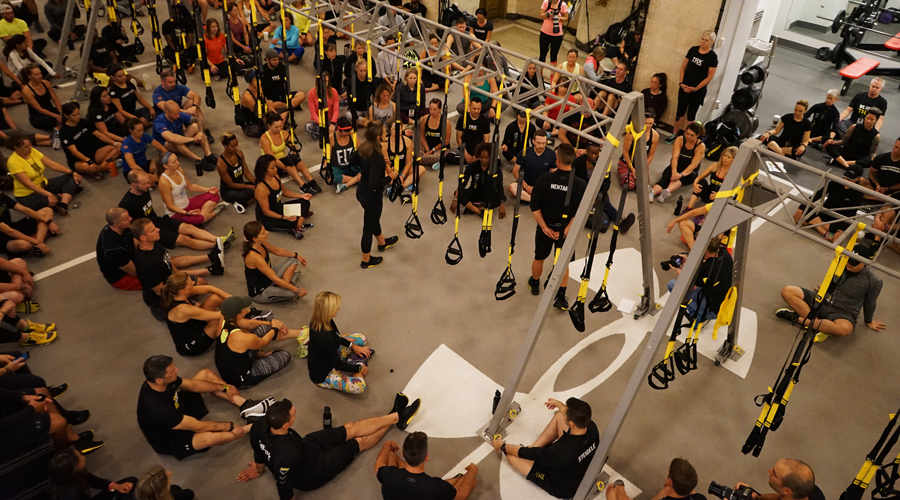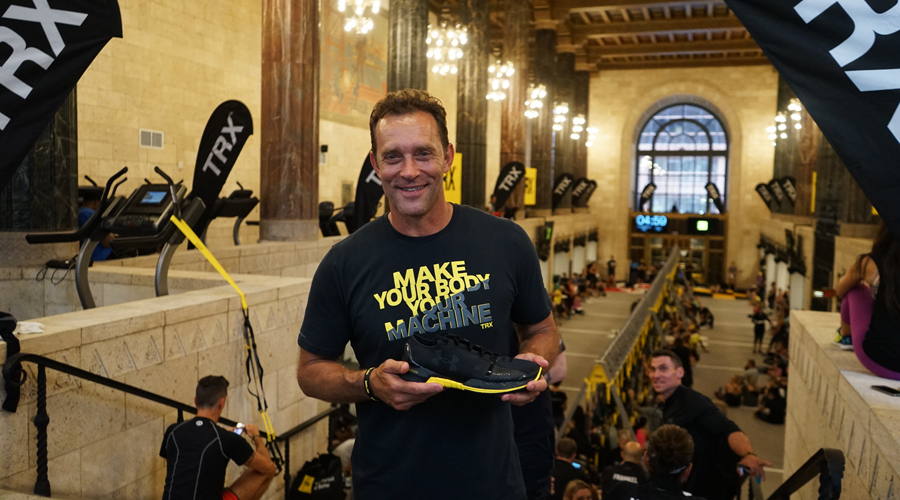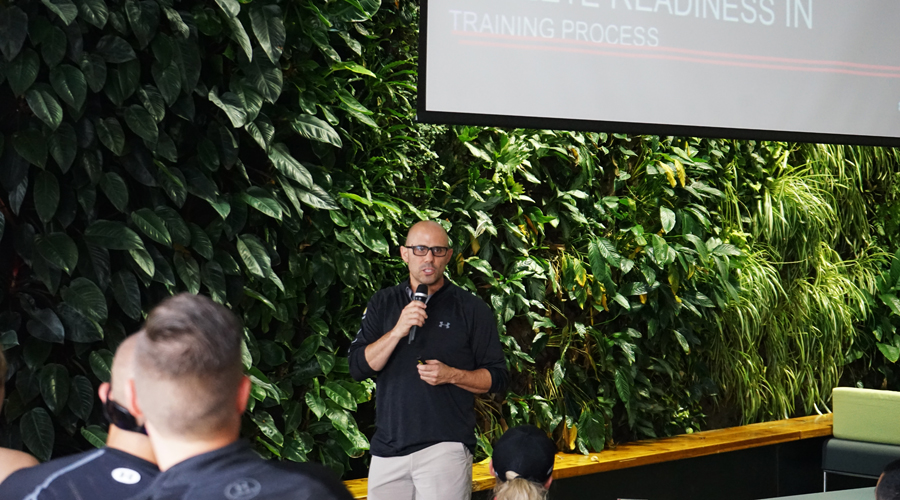TRX unlocks a partnership with Under Armour and a long-awaited equipment line.
By Jahla Seppanen
There’s a cadence for true innovation. It comes around once every few years, even for the Apples of the world. In an industry like sports and fitness, brands are pushed into an ebb of hyper innovation, persuaded either by investors or consumers to release new so-so products just to stay relevant. But a lack of new products doesn’t always mean a company is sliding into the abyss. In fact, it could mean the opposite.
TRX, the suspension training brand, came to market with its suspension straps in 2004 after Founder Randy Hetrick invented the straps seven years earlier while being deployed in Southeast Asia. Hetrick, a SEAL Team Officer for Naval Special Warfare for 14 years, became a garage entrepreneur with his TRX concept.
A Simple Accessory
After more than a decade and a half, TRX is still known primarily for its straps.
But for a simple piece of equipment, it’s surprisingly ubiquitous — almost every pro athlete includes it in their training regimen. During TRX’s product innovation downtime, the company was pushing education, building some of the most calculated programming in the training world.
“It’s an accessory like a pair of earrings,” Hetrick joked with SGB. “But we wrapped it in education: how to use it and then how trainers can use it with clients.”
The next big innovation for the company came as an accident. The brand was the first to build a body weight training frame for a trade show, which displayed equipment for both viewing and testing. One of Hetrick’s vendors asked if he sold the frames. Hetrick went with the flow, nodded yes, and quickly gathered with his crew to figure out a price.
Only in 2012 did TRX turn its direction to consumer markets, after wholly facing the club space since its founding. In 2015/16, the brand was stocked in close to every Dick’s Sporting Goods in America.
The transition was a natural one, but also calculated. Many TRX investors were pushing for the brand to adopt an infomercial approach, while vendors poked for new equipment pieces to stock their gyms. Hetrick took note of demands, but kept the focus on educating TRX’s some 200,000 trainers worldwide, which he calls “the Praetorian guards of the brand.” It was a smart move.
Under Armour Comes Calling
Instead of bombarding the space with new products that are only as effective as they are used correctly, TRX waited until there was a repeated request for something new … then they waited a little longer. Hetrick admitted that some investors thought they waited too long, and if you ask some members of the industry they’ll say TRX has been fading to obscurity in the past couple years. But if all that’s true, why did Under Armour come knocking?
TRX broke the news of its two-year licensed partnership with Under Armour at its 2016 Trainer Summit in Baltimore the weekend of September 17. The focus of the collaboration is manifest in a pair of co-branded shoes for men and women, which include a TRX training program exclusive with the partnership. Co-branded training apparel has also been released.
“There’s so much commodification in our industry,” said Doug Reed, Under Armour general manager and senior vice president of Men’s Training, the company’s largest division. “Anyone can buy a yard of moisture wicking materials, but amplifying that shirt or shoe with services and experience is how we chose to move forward.”

Putting the science to practice at the TRX Under Armour event in September at Under Armour corporate headquarters
The plan: Under Armour is going to clad you; TRX is going to train you. “Product and programming exists together,” said TRX President Paul Zadoff. “The former must be authentically built on a base of demand.”
Alongside the Under Armour collaboration, TRX is releasing roughly eight new staple training products including a kettle bell, ropes, a medicine ball and more. Many of the company’s high-profile vendors have been asking for years about a TRX expansion line saying, “why do you make me go to a different catalogue to buy this other stuff?” Well, the other stuff is now here.
Nutrition is also on the horizon for the company with supplement line is soon to follow. “You’re going to see a range of new products coming out that are adjacent to one another,” Zadoff said.
Zadoff worked with Nike, along with Under Armour’s Reed, for about 20 years before he noticed just about every athlete and major sports team was using the TRX product. Before departing the swoosh, Zadoff also noted the trend of consumers moving away from big selectorized equipment in preference of compact functional pieces. Once he was made privy to TRX’s programming and research operations, the decision to leapfrog was simple.
Today’s Research
The man behind TRX programming is Chris Frankel, head of human performance, who leads a small three-person team of expert exercise physiologists. He’s been with the company for 10 years and was tasked with bringing the straps, and now the new equipment, to life.
“The hardest part was making the basics engaging. It’s like teaching people how to read. We must begin by stripping down our movements,” Frankel said. “Since the beginning I said, ‘we need programming,’ and I was pumping the brakes a lot in order to get our consumers to move well first.”
This year, Frankel and his team added sets, reps and speed for the first time to their programming, which may sound small, but only in terms of the over-exaggerated research claims the sports & fitness industry tends to lap up.
“One of the biggest limitations to how people consume research is they’ll read one study and it will turn into a commodity,” Frankel said. “Be cautious of those who come out and say what’s best, because it’s all contextual to the individual athlete.”
Frankel is currently dabbling in research both on and off the TRX suspension training, in optimal calorie consumption, the sequencing of exercises for optimal fat burn and where to place high intensity sprints within a workout. Also in his wheelhouse: the future of data within TRX.
TRX is not married to any wearable or activity tracking company. But within the next few years, TRX expects to play in that field. “There’s a difference between data and information,” Frankel added, “And we haven’t seen anyone crack the code on the wearable experience just yet.”
True to form, TRX won’t rush to make a tracker just to say they have a foot in the door. Instead, they’ll be working to perfect a different data platform that’s currently in “B- instead of A+ state,” as Hetrick classified it. The tool is designed to manage group exercise and brings together training data (from any wearable), programs specific to different types of clients and real-time communication between a bigger pool of trainers and trainees.
Photos courtesy Jahla Sappenan and TRX













